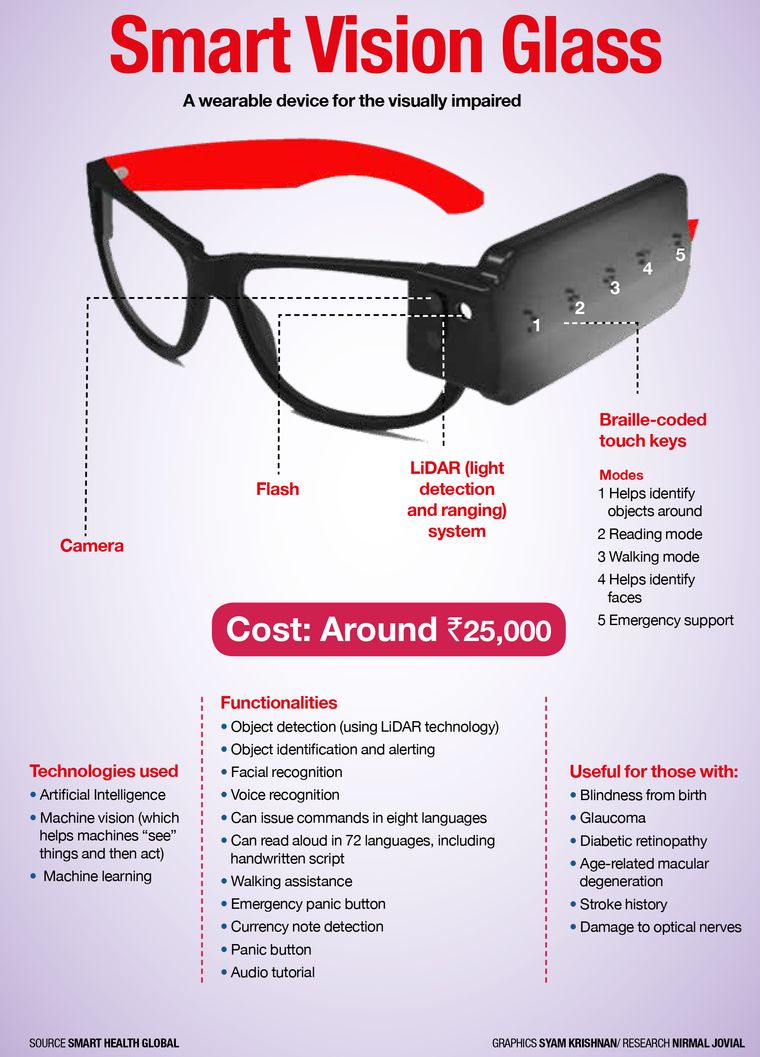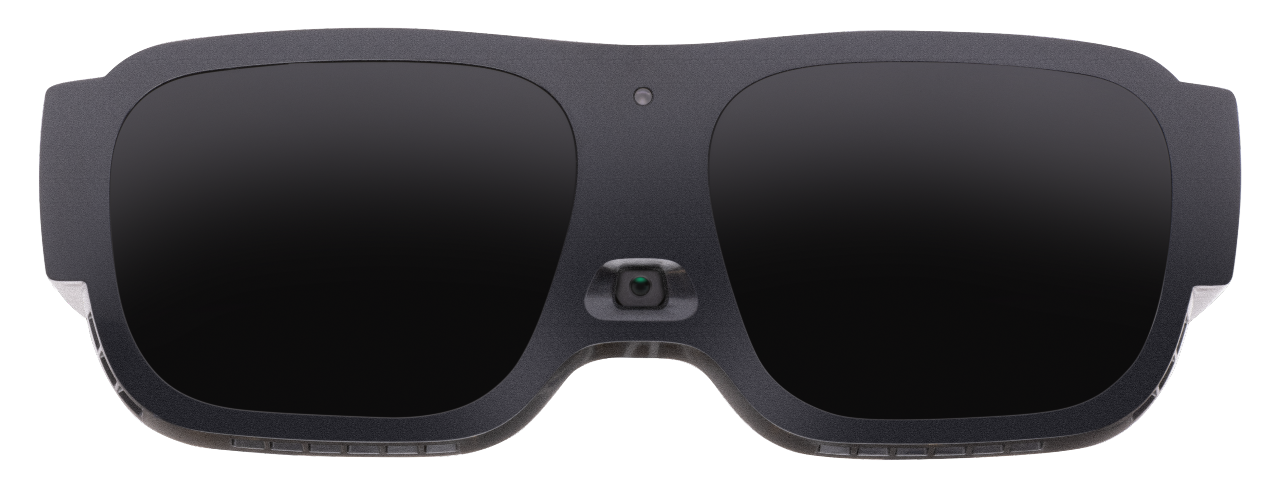Speech-to-Text Devices for Low Vision Users: Enhancing Communication and Productivity
Speech-to-Text Devices for Low Vision Users: Enhancing Communication and Productivity
Blog Article
Empowering Independence With Assistive Modern Technology for the Blind
The integration of assistive innovation for individuals that are blind or visually damaged stands for a significant improvement in cultivating independence and improving top quality of life. With an array of devices-- from display visitors to ingenious tactile devices-- these technologies not only facilitate navigating and communication however likewise advertise social addition and engagement in different elements of life.
Comprehending Assistive Technology
Although assistive innovation has evolved dramatically throughout the years, its basic objective stays the very same: to improve the lifestyle for people with disabilities, especially those that are visually damaged or blind. This technology includes a wide variety of tools and gadgets that promote self-reliance and performance in everyday activities.
Assistive modern technology can be classified into low-tech and state-of-the-art services, each developed to fulfill certain demands. State-of-the-art tools usually consist of software program applications, specialized equipment, and adaptive gadgets that make use of sophisticated modern technology to offer support in numerous contexts. Conversely, low-tech remedies may involve daily products that are customized to enhance accessibility, such as magnifiers or responsive markers.
The combination of assistive innovation into the lives of individuals who are blind or visually hindered not just promotes freedom however additionally fosters social addition and participation in professional and instructional environments. By leveraging these technologies, users can browse their surroundings, accessibility information, and connect effectively, consequently improving their overall lifestyle. Understanding assistive modern technology is important for caregivers, professionals, and supporters who aim to support individuals in optimizing their possible and accomplishing higher self-reliance.
Sorts Of Assistive Gadgets
Assistive tools for the aesthetically impaired and blind are important tools that improve daily obeying dealing with details difficulties encountered by customers. These devices can be extensively categorized into 3 main types: optical devices, digital devices, and sensory tools.

Sensory gadgets, such as Braille display screens and tactile maps, provide alternate means to receive details. Braille shows convert electronic text into Braille, making it possible for users to go through touch. Responsive maps provide spatial understanding with elevated textures and lines, enabling far better environmental awareness.
With each other, these assistive gadgets empower individuals with aesthetic impairments to engage more completely with their surroundings, promoting higher freedom and confidence in everyday activities.

Influence On Daily Life
The combination of assistive modern technology right into the everyday lives of individuals that are visually damaged or blind dramatically improves their ability to browse and interact with the globe around them. Tools such as screen visitors, Braille displays, and mobile applications help with access to info, allowing individuals to involve with electronic material, interact successfully, and manage daily jobs individually.
Additionally, innovations like smart glasses and navigation applications provide real-time help in strange atmospheres, boosting mobility and self-confidence. These tools make it possible for individuals to recognize challenges, read indicators, and also identify faces, thus fostering a feeling of freedom in public rooms. In addition, home automation systems, which can be controlled via voice commands, allow people to manage their living environments more properly, improving convenience and security.
The impact of assistive innovation prolongs beyond practical jobs; it promotes social inclusion and emotional wellness. By connecting the void in between individuals and their surroundings, these modern technologies equip individuals to take part totally in neighborhood activities, seek academic possibilities, and engage in meaningful connections. Ultimately, the advancement Bonuses of assistive innovation contributes in redefining the possibilities for people that are visually damaged or blind, leading to a more comprehensive and available society.
Success Stories and Testimonies

An additional powerful review comes from Mark, a recent college graduate who utilized screen reading software application throughout his academic journey. This technology allowed him to access training course materials and take part in conversations, ultimately causing his effective change into the workforce. Mark credit histories assistive technology for empowering him to attain his occupation objectives, highlighting its duty in leveling the having fun field for individuals with aesthetic impairments.
In addition, community centers have actually reported raised engagement in their programs thanks to the intro of accessible digital systems. These platforms have made it simpler for people to connect, share resources, and assistance one another. These success stories collectively emphasize the extensive impact of assistive modern technology in fostering freedom, improving top quality of life, and damaging down obstacles for the aesthetically impaired and blind area.
Future Patterns in Assistive Tech
Arising innovations are positioned to transform the landscape of assistive tech for people that are visually damaged or blind. Innovations in synthetic intelligence (AI) and maker knowing are enhancing the capabilities of devices, making it possible for even more user-friendly customer experiences. AI-driven applications are progressively able to acknowledge objects and review text out loud in real-time, supplying customers with valuable information about their environments.
In addition, developments in wearable modern technology are creating new chances for freedom. Smart glasses furnished with enhanced fact features can overlay critical information onto the customer's field of view, assisting in navigation and communication with the atmosphere. Additionally, the assimilation of Web of Things (IoT) tools is streamlining ease of access in smart homes, permitting users to manage appliances and get alerts via voice commands look at these guys or tactile interfaces.
The growth of braille display screens and tactile responses systems is additionally rising, advertising access to electronic content and boosting communication. As these technologies continue to advance, they assure to boost daily living, instructional opportunities, and employment potential customers for people with visual disabilities. Continuous cooperation in between technologists, customers, and advocacy groups will certainly be crucial in making certain these innovations meet the needs of the community effectively.
Verdict
In conclusion, assistive modern technology plays a crucial function in enhancing the independence of individuals who are aesthetically damaged or blind. By giving essential devices and sources, these technologies assist in enhanced interaction, access, and navigating to info, thus cultivating autonomy and confidence. The transformative influence of assistive gadgets not only promotes efficient communication with the atmosphere yet also urges social addition and participation in various aspects of life, inevitably encouraging individuals to flourish within their areas.
The integration of assistive technology for individuals that are blind or visually damaged stands for a substantial improvement in promoting freedom and boosting quality of life.The combination of assistive technology right into the lives of people who are blind or visually hindered not only promotes freedom however additionally promotes social inclusion and eye optometry participation in instructional and expert atmospheres. Ultimately, the advancement of assistive innovation is crucial in redefining the possibilities for individuals that are blind or visually damaged, leading to a more easily accessible and inclusive society.
Numerous individuals who are blind or visually damaged have shared inspiring success stories that highlight the transformative influence of assistive innovation on their lives.In conclusion, assistive innovation plays a pivotal role in enhancing the freedom of people who are blind or aesthetically impaired.
Report this page